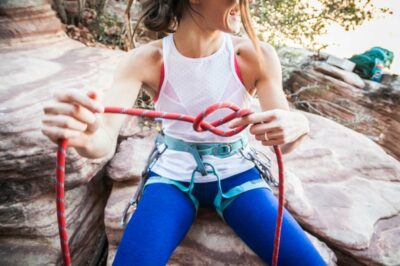Contributed by Brent Frayser
The regular workout requires determination and concentration, as well as some dermatological knowledge. Blisters aren’t uncommon among professional and amateur athletes. In this article, we will discuss this nasty topic and provide you with both preventive methods for treating blisters.
What Causes Them?
Blisters occur due to friction. Friction, simply put, is the result of two forces acting upon each other. If there is too much irritation between your skin and other objects, such as your running shoes or weights, blisters will occur. This friction will cause the two layers of your skin (epidermis and dermis) to separate, and crack and fill with clear fluid. Cracks can also be filled with blood if the friction tears blood vessels.
5 Ways to Treat Heat Bumps
Eczema 101: What It Is, and How You Can Soothe It Naturally
How Our Team Stays Fit (Without Killing Ourselves)
Blisters in Sports and How to Avoid Them
All athletes who participate in sports that involve intensive gripping such as baseball, climbing, or weightlifting, are prone to blisters. Blisters are also a standard issue among gymnasts, due to high friction that occurs when they grab and rotate around the bars. They are also common amongst sports that include a lot of footwork, accelerating and decelerating, including soccer, basketball, football and other similar sports.
It’s generally better to attempt to avoid blisters rather than having to treat them later— here are several ways you can try to avoid.
Make sure that your shoes fit.
Wearing oversized or undersized shoes is probably the most significant source of blisters. When choosing shoes, always prefer comfort over looks if you want to avoid blisters.
Socks, too!
Apart from comfortable shoes, you also need sports socks. Socks with reinforced heels and toes are also a good choice for extra safety.
Create a Buffer
You can also purchase medical tape or paper tape and use it to cover the blister-affected skin area.
Treatment and Recovery for Blisters
If you are an athlete, you are likely to experience blisters at some point during your career. Because of this, it is essential to know how to treat them.
First, you should check and see if the blister is still closed or torn open. Most people carelessly tear the top layer of skin once they pop the blister; this should be avoided. Blisters are the skin’s natural reaction to friction and tearing the blister would be counterproductive.
Draining fluid is also a very important part of proper blister care. The following steps are recommended:
- Clean the blister and the skin around the blister with antiseptic liquid.
- Sterilize a needle (you will use it to drain the fluid).
- Apply pressure on the blister until the surface breaks.
- Once you drain all the fluid, apply a cleansing ointment and cover it with a bandage.
Recovering from blisters isn’t too painful but should be taken seriously. Even a small infection can enter your bloodstream through the infected area, and cause harm. Thankfully, help for treating blisters comes in many forms.
Anyone who has experienced blisters will probably tell you it was a very unpleasant experience. However, by taking the proper persuasions, you will have a better chance of avoiding this common problem, while staying in shape and seeing success.
About the Author: Brent Frayser is a media relations representative for Pure Barre, who is a graduate of the University of Mississippi with a Bachelor’s Degree of Business Administration (Major in Marketing, Minor in Management). He was born and raised in the south, is very outgoing, with a strong sense of determination. In his spare time, he enjoys: reading, writing, coaching baseball and football, and spending time with family and friends.

